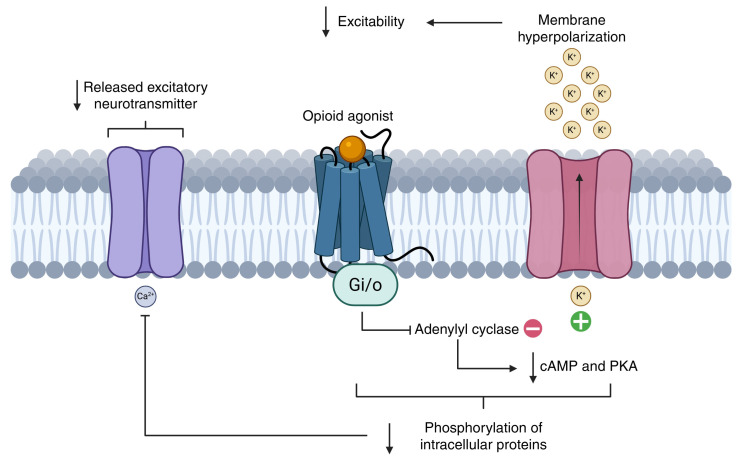Figure 2.
Cellular mechanism of action of opioid receptors. Binding of an opioid agonist to the µ-opioid receptor activates Gi/o protein signaling, leading to inhibition of adenylyl cyclase and a subsequent decrease in intracellular cyclic adenosine monophosphate (cAMP) levels and protein kinase A (PKA) activity. This results in reduced phosphorylation of intracellular proteins. Concurrently, opioid receptor activation inhibits voltage-gated calcium channels (reducing excitatory neurotransmitter release) and opens potassium channels, causing membrane hyperpolarization. These combined effects lead to reduced neuronal excitability and diminished synaptic transmission. +: activation; −: inhibition. Created in BioRender. Ruiz de Porras, V. (2025). https://BioRender.com/bx6zmb5.

